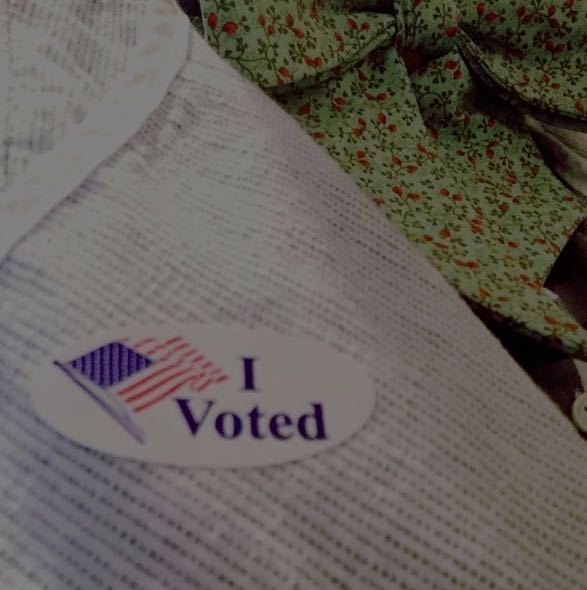It’s a story often told. You walk into the voting booth on Election Day and you don’t like any of the candidates you have to choose from.
So then what are you left with?
Frustration? Anger? Indecision?
Well, now’s the time to do something about it. Election Day is on Tuesday, March 6th.
Why are primaries so important?
Primary elections are when we decide who will end up on the ballot in November. Primary elections are how we shape the quality of the candidates we have to choose from. And since many areas of Texas are dominated by either Republicans or Democrats, primary elections are where many of our future legislators and representatives are ultimately chosen.
Let’s take a look at the numbers. In Texas’ 2014 primary elections, voter turnout for Republicans was 7.18 percent and just under 3 percent for Democrats. Many of these races then went to a runoff, where turnout was just under 4 percent for Republicans and 1.06 percent for Democrats.
Take a moment and think what that means for the rest of us. In the best case scenario, less than 10 percent of our state’s population chooses our two major party candidates. In the worst case (in areas dominated by one party or another), less than 10 percent of our state’s population chooses the actual candidate who will represent the rest of us in elected office.
So what’s on the ballot?
This is a midterm election year, which means that there are no presidential candidates on the ballot. However, there are lots of other equally important races to pay attention to.
Here’s a snapshot of a few of the biggest races going on across the state and in Travis County.
US Senate – Incumbent Republican Ted Cruz is running for reelection and facing some primary challengers. On the Democratic side, there has been a lot of news coverage and energy around Beto O’ Rourke, who has come out swinging against Cruz and has made a bit of a name for himself through his abundant use of Facebook Live.
US House – One of the Austin area’s long-serving US Representatives (Lamar Smith) announced his retirement in November, opening the door for a big election for Texas’s 21 US Congressional District seat. On the Republican side, 18 candidates are vying to replace him, including Jason Isaac, who currently serves in the Texas Legislature and represents District 45 (which includes Blanco and Hays counties). On the Democratic side, several prominent Austinites had already pledged their intention to run before Smith announced his retirement, including Elliott McFadden, Derrick Crowe, Joseph Kopser, and Mary Wilson.
Governor – Incumbent Republican Greg Abbott is up for reelection this year and is facing some primary challengers, but has launched an extremely strong and well-funded campaign. On the Democratic side, nine candidates are running, including Lupe Valdez (the former sheriff of Dallas County) and Andrew White (the son of former Texas Governor Mark White).
Lieutenant Governor – Incumbent Republican Dan Patrick is up for reelection this year and is facing one primary challenger, Scott Milder (a businessman and native Austinite). One the Democratic side, Michael Cooper and Mike Collier are facing off for their party’s nomination.
Texas House of Representatives – The race for Texas House District 46 (which includes East Austin) has turned into a contentious one, with several Democrats running against the incumbent, 12-term Democrat Dawnna Dukes. These candidates include Sheryl Cole (a former Austin City Council person), Jose “Chito” Vela (an immigration attorney), Ana Cortez, Casey McKinney, and Warren Baker.
In District 47 (west Austin) Republican incumbent Paul Workman is facing two challengers (Jay Wiley and Patty Vredevelt). On the Democratic side, the race is pretty crowded with five candidates all vying for right to run in November.
For a full list of all the candidates running in all the primary races in Texas, check out this great list from the Texas Tribune>>
For a full list of all the candidates running in our local primary races (plus information about them and their policy positions), you can check out the League of Women Voters nonpartisan voters guide, which is available in English and Spanish here>>
You can also download The Voting App for more information about Texas primary candidates.
And last but not least, you can visit vote411.org for your personalized ballot. Doing this will ensure that you have the opportunity to research all of the candidates running to represent you before stepping into the booth on Election Day.
So how do I vote?
Election Day is on Tuesday, March 6th. In Travis County, you can cast your vote at any polling station. (You don’t have the pick the one closest to your house). More information about polling locations and voter ID requirements are available here>>
In Texas, you do not need to register as a member of any particular party in order to vote in primary election. All you need to do is show up at the polls on Election Day and select which party’s primary you’d like to vote in. The only rule is that you can’t vote in multiple party’s primary elections in the same year. You have to pick one.
PS – Wondering where the Green Party, independent candidates, or Libertarians are? During these primaries, only Democrats and Republicans are on the ballot. (The Green Party for example, selects candidates through a convention process). You’ll hear more about these independent or third party candidates closer to the general election in November.



